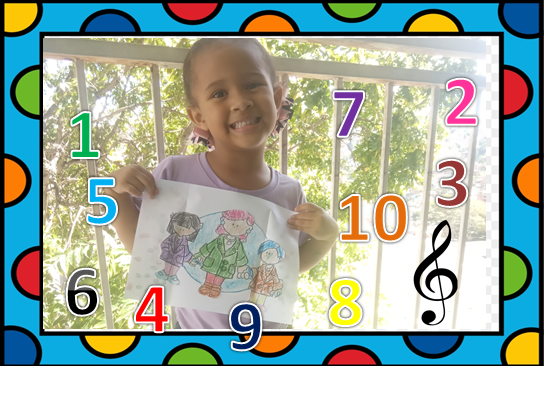
Hola hivers. En esta oportunidad presentaré una experiencia que ha nacido al calor del confinamiento generado a propósito de la pandemia de Cóvid-19 que se conjuga con mi rol de mamá y docente: me convertí en maestra de tareas dirigidas.
¿Qué son tareas dirigidas? En Venezuela, se le llama “Tareas dirigidas” a un espacio en el que un maestro o maestra apoya a los niños con los deberes escolares y además ayuda a fortalecer los procesos de lecto-escritura, operaciones matemáticas básicas y todos los contenidos necesarios. Durante la pandemia, en enero de este año (2021) una vecina me pidió que ayudara a su niña con las tareas, quien cursa segundo nivel de preescolar (Kinder) y es compañera de mi hijo en el mismo colegio y como ella trabaja llega muy tarde para apoyarla diariamente con las tareas escolares asignadas por medio de guías semanales.
Así iniciamos con nuestra jornada de tareas dirigidas. Arantza tiene 4 años y es una niña muy inteligente, conversadora y llena de energía. Cuando iniciamos solo repasaba o unía puntos, reconocía las vocales y recitaba los números de 1 al 10. Durante el tiempo que llevamos trabajando diariamente (de lunes a viernes) sus avances han sido inmensos. Se aprendió el abecedario y comenzó a escribir por sí misma letras separadas. Ha adquirido las dimensiones de espacio a la hora de escribir, lo que significa que lo hace dentro de la línea del cuaderno. También comprende cuentos cortitos y ha desarrollado hábitos de higiene y disciplina durante la jornada.
Hay algo que a Arantza le ha costado un poco aprender: los números. Ella sabe muy bien repetirlos de memoria, pero se le hacía cuesta arriba identificarlos. Realicé como recurso didáctico unos números en cartulina y los coloreé y a diario nos sentamos a identificarlos. Pasaron varias semanas y nada que lográbamos que los aprendiera.
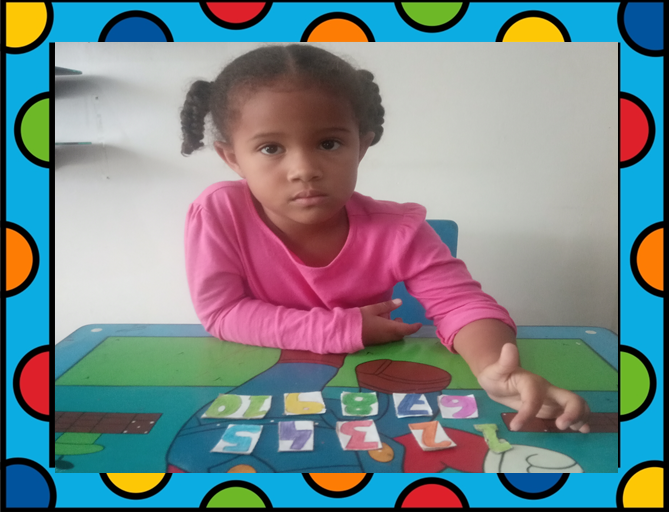
En este punto comprendí que esta estrategia no estaba resultando, por lo que decidí acompañarla con otra más dinámica y divertida para los niños. Fue así como encontré una canción que dice así:
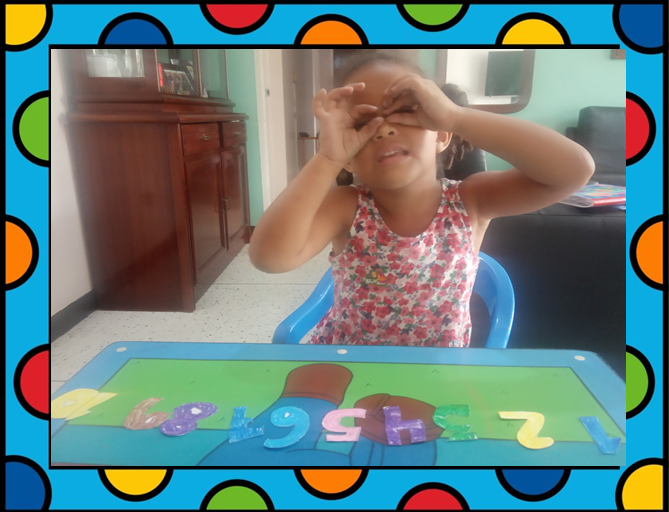
Incorporamos esta canción al inicio de la jornada junto con otras que tradicionalmente cantamos. La repetíamos a la hora de estudiar los números, y así fue como rápidamente Arantza se aprendió los números. A veces no recuerda alguno de inmediato y por la forma del número se va a la canción y exclama “El seis la cola del gato”, por colocar un ejemplo.
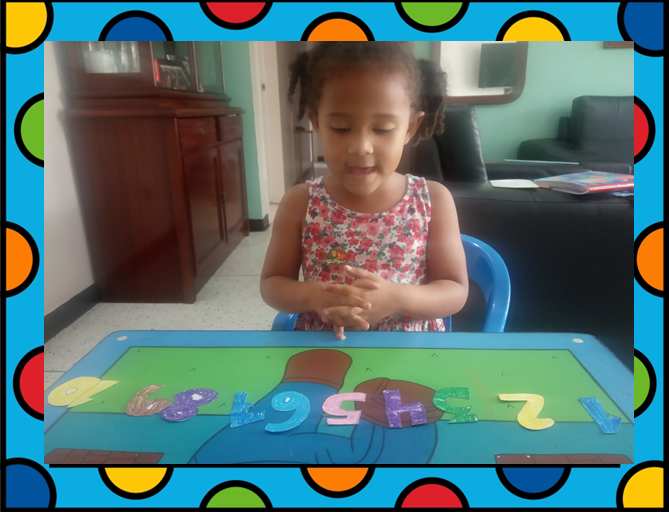
No soy maestra de Educación Inicial (Preescolar) pero como mamá de un niño de 5 años en el espectro del autismo me ha tocado inventar y utilizar muchas estrategias para su enseñanza y aprendizaje. Ya tengo 5 niños en las jornadas de tareas dirigidas de niveles educativos y colegios diferentes y la experiencia ha sido maravillosa, cada uno con sus particularidades y necesidades a las que nos hemos enfocado, todo en el marco de las medidas de bio-seguridad para el cuidado necesario.
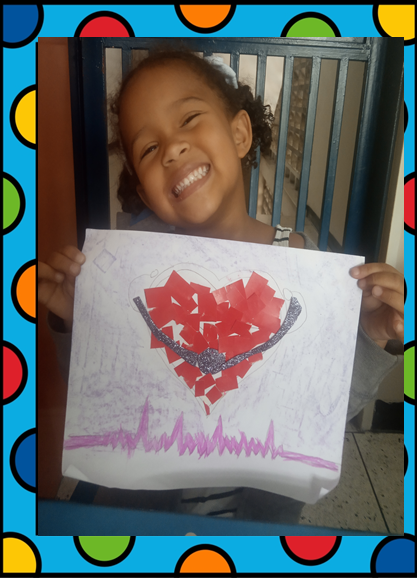
Nos seguimos leyendo.
English versión
Hello hivers. In this opportunity I will present an experience that was born in the heat of the confinement generated by the Covid-19 pandemic, which is combined with my role as a mother and teacher: I became a teacher of directed tasks.
What are directed tasks? In Venezuela, "directed homework" is the name given to a space where a teacher supports children with their homework and also helps to strengthen the processes of reading and writing, basic mathematical operations and all the necessary contents. During the pandemic, in January of this year (2021) a neighbor asked me to help her child with her homework, who is in the second level of preschool (Kinder) and is a classmate of my son in the same school and as she works she arrives very late to support her daily with the homework assigned through weekly guides.
This is how we started our homework day. Arantza is 4 years old and is a very intelligent, talkative and energetic child. When we started, she was only reviewing or connecting dots, recognizing vowels and reciting numbers from 1 to 10. During the time we have been working with her daily (Monday through Friday) her progress has been immense. She learned the alphabet and began to write separate letters on her own. She has acquired the dimensions of space when writing, which means that she writes within the line of the notebook. She also understands short stories and has developed habits of hygiene and discipline during the day.
There is one thing that Arantza has had a little trouble learning: numbers. She knows them by heart very well, but it was difficult for her to identify them. As a didactic resource, I made some numbers on cardboard and colored them, and every day we sat down to identify them. Several weeks went by and we could not get him to learn them.

At this point I realized that this strategy was not working, so I decided to accompany it with another more dynamic and fun strategy for the children. That's how I found a song that goes like this:

We incorporated this song at the beginning of the day along with others that we traditionally sing. We repeated it when it was time to study the numbers, and that is how Arantza quickly learned the numbers. Sometimes she doesn't remember one right away and because of the shape of the number she goes to the song and exclaims "El seis la cola del gato", to give an example.

I am not an Early Childhood Education (Preschool) teacher but as a mom of a 5 year old child on the autism spectrum I have had to invent and use many strategies for teaching and learning. I already have 5 children in the directed homework days of different educational levels and schools and the experience has been wonderful, each one with their particularities and needs that we have focused on, all within the framework of bio-security measures for the necessary care.

We keep reading each other.

Felicidades, me encanto tu post, sobre todo las canciones porque resulta que también tengo una hija de 4 años y esas canciones la canta muchas veces en el día, me lleno de orgullo porque se que le ayuda en su aprendizaje, no soy maestra pero con la llegada del covid-19 nos ha tocado, siempre busco de que aprenda a través de juegos y me ha funcionado. Un gran abrazo y muchas felicidades.
Las canciones y los juegos resultan muy divertidos para los niños, por lo que resulta genial incluirlos como estrategia para el aprendizaje. Éxitos como maestra con tu tesoro,vendrán otros post para aprender las letras, los números y la lectura